How Much Should You Spend on Marketing?: Marketing Budget Calculator + Benchmark Report

You can have the best marketing team, the most creative campaigns, and an incredible product-market fit, but if you don’t have the right budget to power your marketing, your efforts will fall flat.
Many businesses aren't spending the appropriate amount on marketing to hit their targets. There are several reasons why this might be the case for your business—including not knowing if your spending is in line with other companies of your size and vertical.
You might have heard various percentages of revenue or total budget suggested as the average amount to spend on marketing, but the reality is more complex. The amount businesses spend on marketing depends on their vertical and the company size.
This benchmark report shows how companies are spending their money on marketing. The raw data is drawn from Deloitte's CMO Survey 2021 and Gartner's Annual CMO Spend Survey 2020-2021. We’ve organized it so you can see at a glance the trends that impact the average marketing spend. Plus, our ca...
Marketing Leaders: Here’s what to expect from a How To SaaS engagement
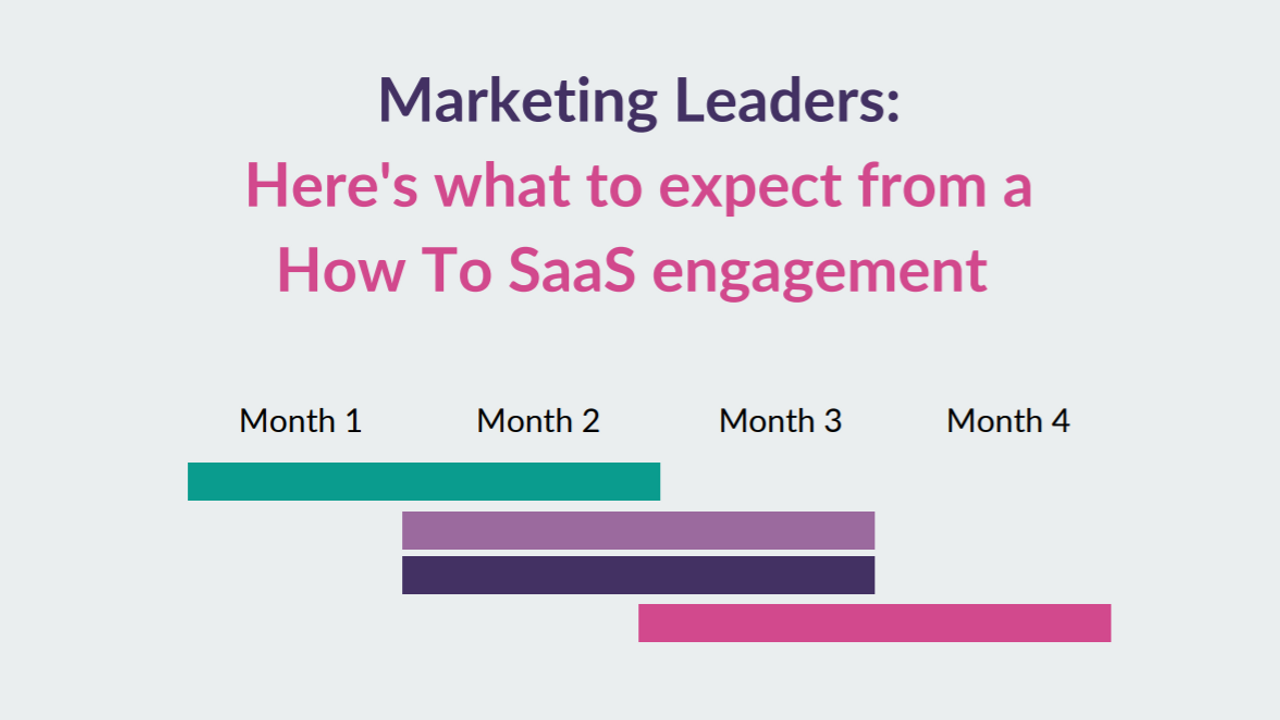
If your business is considering bringing in an external marketing consultant, it's likely that the in-house marketing leaders will have (and should have!) a lot of questions. These questions might include:
Will the benefits Marketing sees actually warrant the time and expense of the engagement?
Does the consultant have the relevant experience to understand your business and give valuable insights?
Will they work with your team to make changes, or will they just hand you a list of unrealistic recommendations?
At How To SaaS, our team is made up of marketing professionals, and almost all of us have been in this position. We've asked these questions, and we've often been frustrated by how vague some consultants are in their answers.
We want your experience with How To SaaS to be different. To help you get a clearer picture of what working with us means for your marketing department, this article covers what you need to know:
Shifting Marketing’s Accountability: Look inside Post-Acquisition Marketing
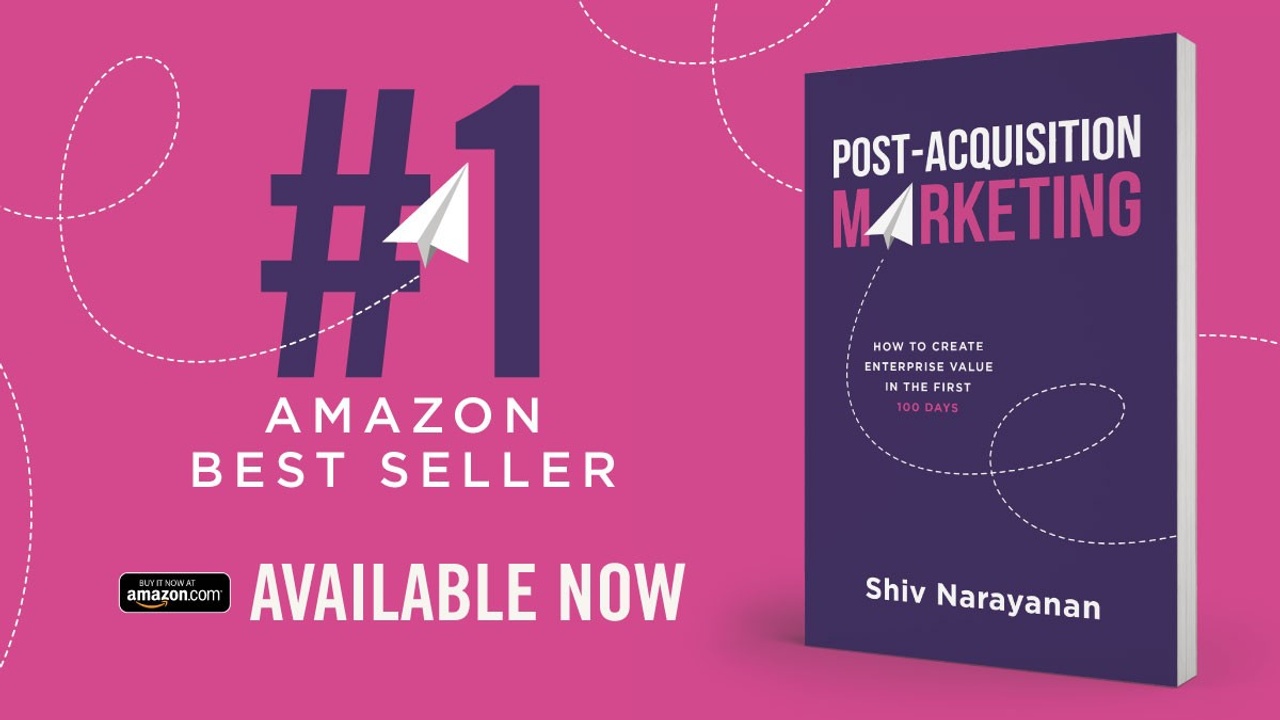
Most PE-backed businesses aren't getting the full value from Marketing as a growth lever.
To start changing that for your portfolio companies, take a look at Shiv Narayanan's new book, Post-Acquisition Marketing: How to create enterprise value in the first 100 days. Here's what you'll learn:
One of the key areas the book covers is how to effectively shift Marketing's accountability. Below is an excerpt from Post-Acquisition Marketing that reveals:
- Why Marketing's current accountability is stalling revenue growth
- The data Marketing should be tracking
- A real-life case study of a business that made this switch

Shifting Marketing’s Accountability
“I need to know the truth, and I need to know it fast.”
Those were Henry’s first words on his first call with me, shortly after Fleetsync, his fleet-management software company, was acquired by the private equity firm North Star Capital.
Henry was the new CEO, who had taken over as the two founders transitioned out ...
CMO-CFO Alignment in Portfolio Companies: Why It Matters, and How To Achieve It

When you bring on new portfolio companies, defining titles, setting expectations and clearly assigning responsibilities in the company is usually among the first things you do. This should include identifying and optimizing areas of alignment between the leaders in the company. But, too often, this gets pushed to the back burner because there doesn’t seem to be a direct connection to the investment thesis or because investors are cautious of interfering with the company’s internal dynamics.
However, without alignment between function area leaders, the company could be:
- Missing out on budget efficiencies
- Spending dozens of hours on overlapping work
- Losing potential customers in the cracks between departments
- Pulling the business in multiple different directions
You can’t assume the executive team will be aligned just because they’re in the same office. These relationships need to be proactively managed, with clear communication requirements and goals that make sense for both ...
PQLs: The Metric Low-Touch Models Need To Improve Sales Efficiency
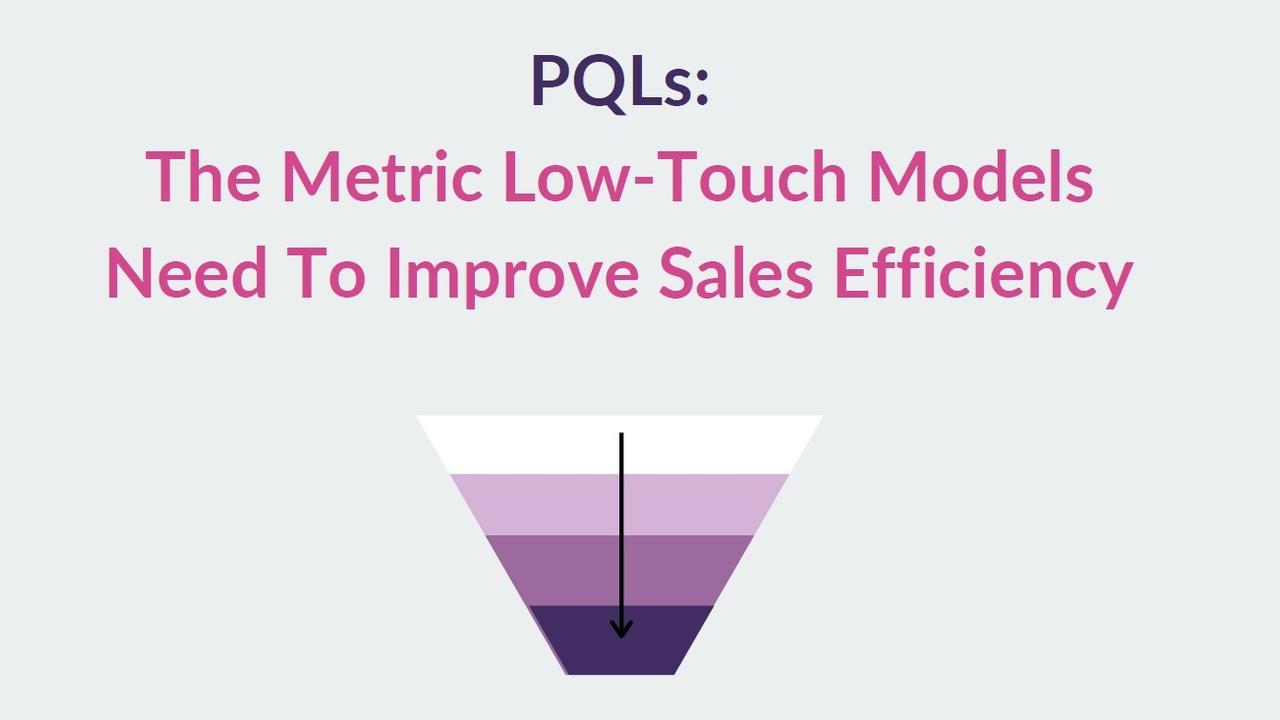
Improving sales efficiency is one of the most common growth levers that feature in PE investment theses. There is huge potential for growth here if you improve conversion rates throughout your sales funnel. However, you can’t improve sales efficiency if you don’t have data on how prospects are moving through the pipeline towards closed-won.
In high-touch sales models, getting data on pipeline status is as easy as shooting an email to someone on your sales team. But in companies with low-touch models that have small or nonexistent sales teams, this can be more complex. How do you know if a lead is moving through the pipeline if you don’t have a salesperson to collect that feedback?
In a low-touch, ‘try before you buy’ SaaS model (for example using free trials or freemium plans) you’re likely dealing with small deal sizes and short sales cycles. There are thousands of people who want to try out your product: The challenge is converting these users into paying customers.
The risk here...
How to Hire Marketing Leaders for PE-Backed Companies

Whether you’re filling gaps in the current marketing strategy, growing the marketing function, or restructuring the team to merge products, hiring new marketing leaders is a common step after an acquisition.
Without the right leaders, Marketing won’t have the management and expertise it needs to scale demand generation, improve nurture, and support Sales. But finding marketing leaders that suit the company, its objectives, and your ideal roadmap can be a challenge.
The right marketing leaders will accelerate your growth; the wrong marketing leaders will keep you stagnating at status quo, or make rash decisions that could damage your brand. If you hire a CMO who isn’t a good fit for your business, the best-case scenario is several months of slow progress on your growth levers, money wasted on initiatives that go nowhere, and the expense and hassle of hiring a replacement within a year.
For PE firms, that kind of outcome is disastrous. With a limited time to grow the company’s revenu...
How to Get Better Marketing Presentations at Board Meetings (+ Free Template)
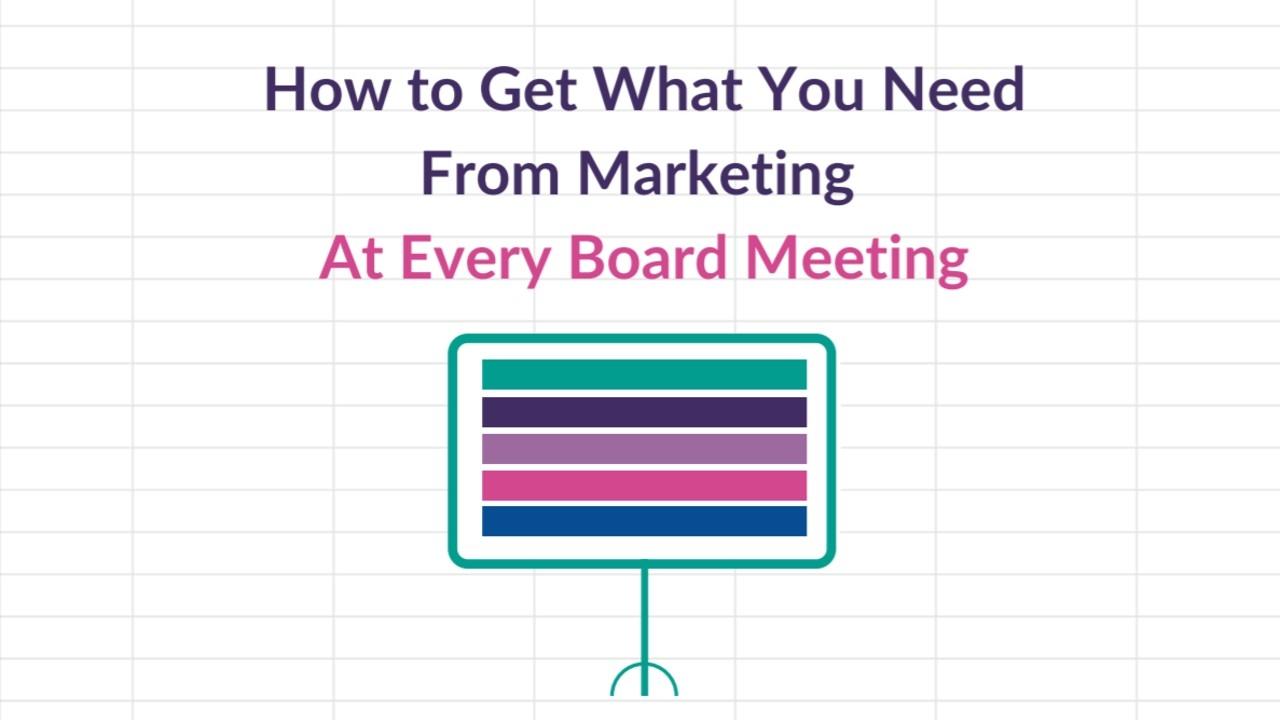
Portfolio companies often believe that their investors only care about EBITDA and, therefore, that they’ll refuse to invest more into an initiative. If you’re a PE investor, you’ll know that’s far from the truth.
After an acquisition, aligning the management team and the board around core initiatives as quickly and efficiently as possible is the number one priority for both portfolio companies and the PE firm. Scaling Marketing is often at the center of this, and most PE firms are keen to give Marketing budget to grow—if Marketing can prove they’ll deploy that additional budget responsibly.
Too often, Marketing walks into the boardroom and asks for another $1 million to supplement their budget, without data to back up their request and without explaining how these projects support the key investment thesis growth levers.
Do you know where and how Marketing would be using the extra budget, and what their projected growth metrics are? Does Marketing even know this?
Without the sup...
The Data Framework You Need to Scale SaaS Marketing (+ Free Template)
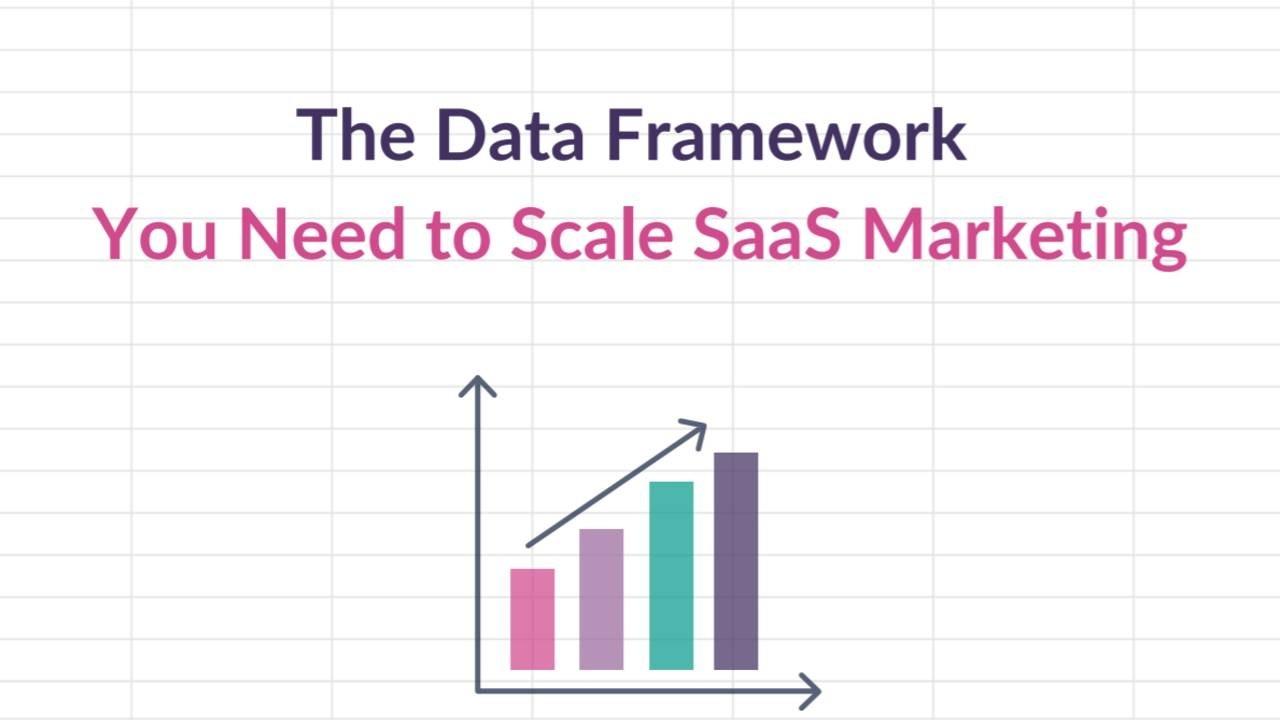
When we’re brought in by a private equity firm to help a particular investment, the portfolio company’s immediate expectation is that we will ramp up Marketing priorities like demand gen and content right away.
Our response is always to slam on the brakes.
Scaling is always the goal, but doing so without the right data framework in place is equivalent to setting your marketing budget on fire. Scaling Marketing isn’t like flipping a switch: It’s about building an engine that is predictable so that we can invest more dollars with confidence as time goes on.
This requires data organization. Without data, you’re pursuing complex initiatives in the dark. You don’t know where to invest or how to track success on those investments. You’re playing Pin the Tail on the Donkey, and maybe you guess right and invest in the right space, but maybe you don’t.
To avoid costly misjudgments, you need to build a marketing data framework that gives you hard evidence of which campaigns are working and...
How Marketing Needs to Help You Deliver On Your Investment Thesis Growth Levers

The revenue opportunities PE investors identify during the due diligence process usually form a big part of the investment thesis and are pinpointed as core growth levers. After the acquisition, starting to build out the strategy for these leavers and put them into practice is a top priority. Seventy-two percent of investors are looking to validate their investment thesis in the first 100 days. You’ve paid a high price to acquire the company, so it makes sense to validate the core growth levers early to make sure you’ve made the right move.
To make this likely (or even possible), everyone needs to be clear early on what is expected from them. Marketing leaders need to be fully aware of how each of the strategic levers in the investment thesis connects to their function and responsibilities, so they can help make sure the company meets those projections.
There are seven core strategic growth levers often included in investment theses:
18 Key Components of a Successful Sales Playbook [2022 update]

As many companies have found out firsthand, hiring salespeople with great track records doesn’t guarantee your sales team will hit their targets.
Even if you fill your team with talented sales reps, they won’t be able to deliver their maximum value unless you train them to be experts on selling your specific products to your specific target market.
A study by Bridge Group shows that the average tenure for a salesperson is only around 1.5 years, so chances are you’re regularly onboarding new salespeople. The faster you can get them up to speed and selling effectively, the more value you’ll be able to get from your limited time with each rep.
The key to training reps better and faster is to create a sales playbook. This asset outlines your company’s particular sales processes and best practices so everyone on the team can refer to and learn from it. The sales playbook should include all the resources new reps need to start making sales.
Whether you’re building a playbook from scrat...



